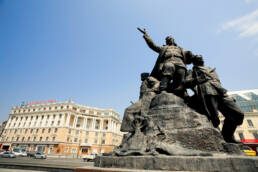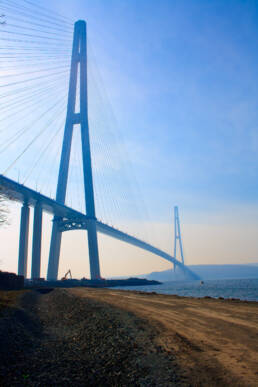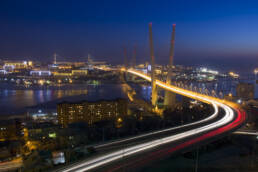Russian Far Eastand Vladivostok
El Lejano Oriente es la parte más oriental de Rusia. La macrorregión limita con dos océanos, el Pacífico y el Ártico, y cinco países (China, Japón, Mongolia, Estados Unidos y la RPDC). El Distrito Federal del Lejano Oriente cubre más de un tercio del territorio del país. La región del Lejano Oriente se extiende por cuatro husos horarios y varias zonas climáticas: desde los desiertos del norte hasta los subtrópicos.
El clima en el norte de la región, más allá del Círculo Polar Ártico, es extremadamente duro. En la parte sur del Lejano Oriente prevalece un clima tipo monzón con inviernos fríos y veranos cálidos y húmedos. Este contraste se debe a la enorme extensión del territorio, casi 4500 km de norte a sur y 3000 km de oeste a este.
La región alberga especies raras de animales y peces. Los habitantes más famosos de la zona son las morsas, los osos polares y pardos, los tigres y leopardos de Amur, los gansos polares y las grullas de nuca blanca. Cincuenta reservas naturales estatales y parques nacionales se encuentran repartidas por toda la región.
Vladivostok es la capital no oficial del Lejano Oriente ruso y uno de los puertos comerciales y bases navales más importantes de Rusia. Vladivostok ("Domina el Este") es también una ciudad completamente encantadora, con un entorno hermoso y montañoso, una arquitectura sorprendente y numerosas islas verdes y bahías arenosas a lo largo de la costa del Pacífico. La más notable de ellas es la Bahía del Cuerno de Oro (llamada así por su semejanza con la de Estambul), sobre la que ahora se eleva un enorme puente colgante, uno de los dos construidos en los últimos años que han mejorado enormemente la pesada infraestructura de la era soviética de la ciudad.
El resto de Rusia también parece estar tomando en cuenta la potencial de Vladivostok. En 2016, el Teatro Mariinsky de San Petersburgo inauguró su impresionante Escenario Primorsky de vidrio y acero, mientras que el Hermitage Vladivostok está programado para abrir. Vladivostok está repleto de bares de cócteles, excelentes restaurantes y un renovado sentido del propósito. No se pierda la ciudad más dinámica y acelerada del Lejano Oriente.



